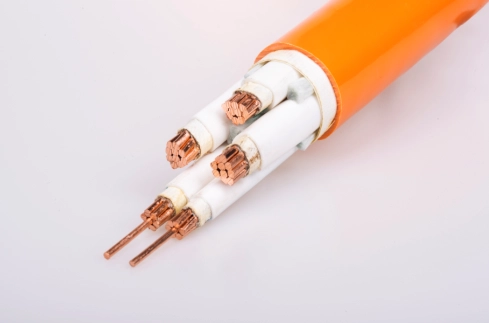Introduction
Overhead power lines play a crucial role in delivering electricity to homes, businesses, and communities across the world. However, these power lines also pose a significant fire risk, especially during periods of high temperatures, dry conditions, and strong winds. Overhead power line fires can have devastating consequences, including property damage, power outages, and even loss of life. In this comprehensive guide, we will explore the causes of overhead power line fires and provide practical tips and strategies for preventing them.
Causes of Overhead Power Line Fires
1. Weather Conditions
One of the primary causes of overhead power line fires is severe weather conditions. High temperatures, dry vegetation, and strong winds can increase the risk of power line failures, sparking electrical fires. During periods of extreme heat, power lines may sag and come into contact with trees or other vegetation, leading to arcing and sparking. Similarly, strong winds can cause power lines to sway and come into contact with each other or nearby objects, resulting in electrical faults and fires.
2. Vegetation Encroachment
Overhead power lines are often located in close proximity to trees, shrubs, and other vegetation. When trees grow too close to power lines, they can pose a significant fire risk, especially during dry conditions. Tree branches may come into contact with power lines, causing sparks and igniting fires. Additionally, falling branches or limbs can damage power lines, leading to electrical faults and fires. Proper vegetation management is essential to prevent overhead power line fires caused by vegetation encroachment.
3. Equipment Failure
Equipment failure is another common cause of overhead power line fires. Insulators, connectors, and other components of power lines may degrade over time due to weather exposure, wear and tear, and other factors. When these components fail, they can create electrical faults that result in fires. Regular inspection, maintenance, and repair of overhead power line equipment are crucial to prevent fires caused by equipment failure.
4. Human Activities

Human activities, such as construction work, vehicle collisions, and vandalism, can also lead to overhead power line fires. Accidental contact with power lines by construction equipment or vehicles can cause electrical faults and fires. Similarly, deliberate acts of vandalism, such as shooting at power lines or tampering with equipment, can result in power line fires. Proper safety measures, training, and security protocols are essential to prevent overhead power line fires caused by human activities.
Prevention Strategies
1. Vegetation Management
Effective vegetation management is key to preventing overhead power line fires caused by vegetation encroachment. Utility companies should implement regular tree trimming and vegetation clearing programs to maintain safe clearances around power lines. Trees and shrubs should be pruned regularly to prevent contact with power lines, and any dead or diseased vegetation should be removed promptly. By keeping vegetation clear of power lines, the risk of electrical faults and fires can be significantly reduced.
2. Regular Inspection and Maintenance
Regular inspection and maintenance of overhead power line equipment are essential to prevent fires caused by equipment failure. Utility companies should conduct routine inspections of power lines, insulators, connectors, and other components to identify any signs of wear, damage, or deterioration. Any issues should be addressed promptly through repairs or replacements to prevent potential electrical faults and fires. By maintaining equipment in good working condition, the risk of power line fires can be minimized.
3. Weather Monitoring and Response
Monitoring weather conditions and taking appropriate actions in response to severe weather events can help prevent overhead power line fires. During periods of high temperatures, dry conditions, or strong winds, utility companies should be on high alert for potential fire risks. Power line patrols should be increased to detect any signs of vegetation encroachment, equipment damage, or other hazards. Additionally, power lines may need to be de-energized or insulated to reduce the risk of fires during extreme weather conditions.
4. insulated sheathed power cable and Education
Raising public awareness about the risks of overhead power line fires and educating the community on fire prevention strategies are essential steps in mitigating the threat of power line fires. Utility companies should collaborate with local authorities, fire departments, and community organizations to develop and implement public education campaigns on power line safety. Information on the dangers of power lines, how to report potential hazards, and what to do in case of a power line fire should be readily available to residents.
5. Emergency Response Planning
Developing comprehensive emergency response plans for overhead power line fires is crucial to minimizing the impact of these incidents on communities. Utility companies should work closely with local fire departments, emergency responders, and other stakeholders to establish clear protocols for responding to power line fires. Training exercises, drills, and simulations should be conducted regularly to ensure that all parties are prepared to act swiftly and effectively in the event of a power line fire. By having well-defined emergency response plans in place, the damage and disruption caused by power line fires can be mitigated.
Conclusion
Overhead power line fires pose a significant threat to communities, but with proper prevention strategies and proactive measures, the risk of these fires can be greatly reduced. By addressing the root causes of power line fires, such as weather conditions, vegetation encroachment, equipment failure, and human activities, utility companies can protect their infrastructure and the people they serve. Through effective vegetation management, regular inspection and maintenance, weather monitoring, public awareness, and emergency response planning, we can work together to prevent overhead power line fires and ensure the safety and resilience of our communities.
